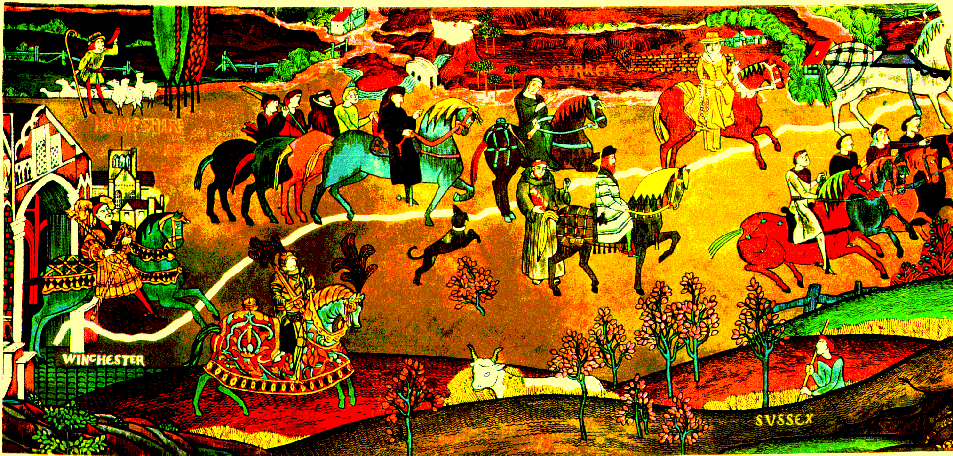



|
The dog is depicted here to emphasize the love of the prioress for animals. She is said to give meat, the food of the aristocrats, to a dog. |

| The Wife of Bath is a very interesting character. To learn more about her, click here, or go to The Character Analysis. |
